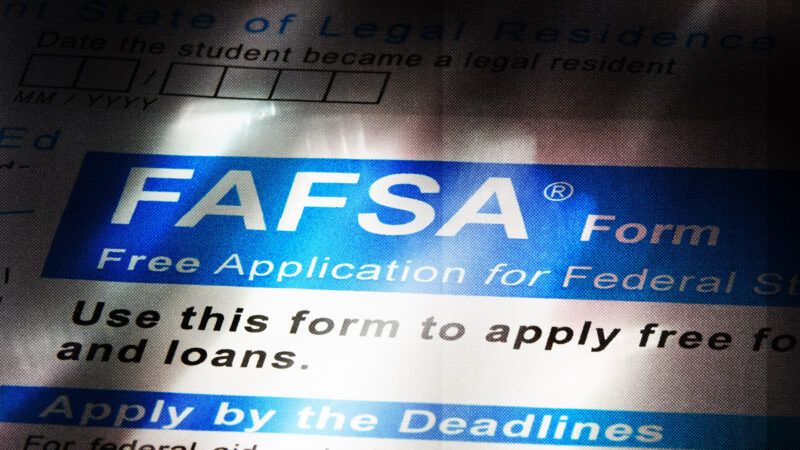The Government Was Supposed To Simplify the FAFSA. Instead, They Created a Glitchy Fiasco.
Instead of making the FAFSA form easier for families, persistent technical issues have imperiled vital financial aid information for millions of students.

This year, the Department of Education unveiled an updated, streamlined version of the Free Application for Federal Student Aid (FAFSA) form. The financial aid application is used by millions of American students and is required for anyone seeking federal student loans or grants, as well as institutional financial aid at most colleges.
Good idea, right? Well, not exactly.
Instead of making the FAFSA easier to complete, the new form has been riddled with technical glitches and delays—imperiling access to accurate financial aid information for millions of students.
The origin of this year's blunder stems from the 2020 Consolidated Appropriations Act, which contains a provision requiring the Department of Education to create a simplified FAFSA form. The new form, launched earlier this year, is in fact significantly shorter than previous versions of the application. The new form cuts the number of questions by more than half, mostly by relying on financial information imported directly from the IRS.
However, there were signs of trouble even before the new form launched. Typically, the FAFSA goes live in October, with the deadline for completion in late June. However, this year's form wasn't released until December 31st—and just as a "soft launch," meaning the application was only periodically available. Yet the deadline to complete the FAFSA hasn't been extended.
From the earliest hours of the FAFSA's availability, persistent technical glitches have made completing the application agonizing for many students and their families. The FAFSA's own website details dozens of errors in the form that have made completing it nearly impossible for some students.
As a result of these issues, 40 percent fewer students had completed the FAFSA by March compared to the same period last year, with total submissions—including incomplete forms with errors—down 27 percent. At this rate, millions of students will miss out on federal grants or loans, and a significant portion of students won't have the complete information they need to decide where to attend college.
Most university financial aid departments rely on FAFSA data to determine how much financial aid to offer students. But persistent issues with the FAFSA have meant that many schools aren't receiving complete or accurate information about applicants—and even that information has been subject to lengthy delays.
Frustratingly, the Department of Education has now told colleges that they can use inaccurate or incomplete information from student FAFSA forms, as long as the end result is that students will receive more aid than they otherwise would.
"You're doing a disservice to students if you give them the illusion that they're eligible for more aid in one year, when really, they're not," Emmanual Guillory, the senior director of government relations at the American Council on Education (ACE) told The Hill. "It just puts our professionals or financial administrators on the ground in a very compromising position."
While making the FAFSA simpler to complete sounds like a great idea on paper, the Department of Education's latest bungle provides a perfect example of all that can go wrong when the government fumbles a seemingly simple task. There isn't any way to hold the Department of Education accountable for the chaos and confusion this year's FAFSA has caused for millions of American families—so there's not much incentive to prevent such a disaster from happening again in the future.
Show Comments (22)